In the realm of financial markets, grasping the intricacies of the Standard Deviation indicator can be a game-changer for traders seeking to navigate volatility with precision. Delving into the 10 best ways to interpret this indicator unveils a world where market behavior becomes more predictable, risk is managed strategically, and trading decisions are grounded in data-driven insights.
As we uncover the nuances of utilizing Standard Deviation effectively, a deeper understanding of market dynamics emerges, paving the path for informed and calculated trading strategies.
Importance of Standard Deviation Indicator
The significance of the Standard Deviation Indicator lies in its ability to quantitatively assess price volatility, providing traders with invaluable insights into market risk and potential trading opportunities. By measuring deviations from the average price, this indicator plays a crucial role in risk assessment and trade management. Traders can utilize the Standard Deviation Indicator to identify shifts in market sentiment, helping them anticipate potential trend reversals or consolidation periods based on changes in volatility.
Moreover, this indicator aids traders in setting realistic price targets, establishing effective stop-loss orders, and determining optimal entry and exit points in their trading strategies. Through calculating deviations from the mean average, the Standard Deviation Indicator enables a deeper understanding of historical price movements, facilitating the prediction of potential future price fluctuations. When combined with other technical indicators, this tool enhances trading analysis by offering a comprehensive view of market conditions and highlighting potential trading opportunities.
Understanding Volatility With Standard Deviation
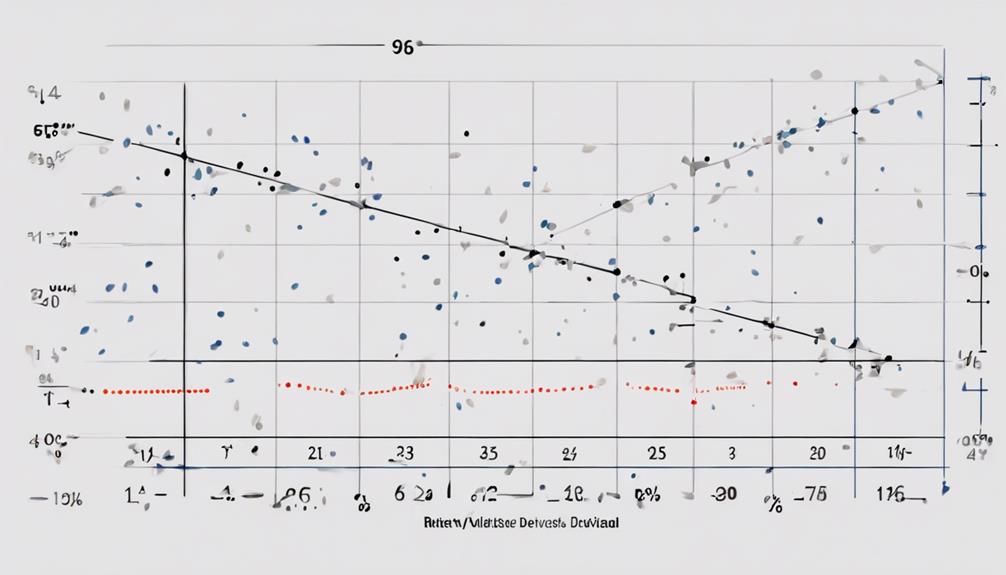
Volatility, as measured by Standard Deviation, reflects the degree of price fluctuations within a market.
Understanding the relationship between volatility and Standard Deviation is crucial for assessing risk and its impact on market dynamics.
Analyzing these factors can provide valuable insights into potential market fluctuations and help in making informed investment decisions.
Volatility and Standard Deviation
An essential aspect of market analysis involves understanding how volatility is intricately linked to the Standard Deviation indicator.
- Standard Deviation measures volatility by showing price dispersion from the average price.
- High Standard Deviation indicates high volatility with significant price swings.
- Low Standard Deviation signifies low volatility in a narrow trading range.
Understanding these relationships is crucial for traders as changes in Standard Deviation can help identify upcoming price movements and potential trend reversals.
Relationship Between Risk
By examining the relationship between risk and market volatility through the lens of Standard Deviation, traders can enhance their strategic decision-making processes in navigating dynamic trading environments.
Standard Deviation measures volatility by showing price dispersion from the average price, aiding in risk assessment and management. Low Standard Deviation suggests low volatility and stable prices, indicating a more predictable market environment with reduced risk.
In contrast, high Standard Deviation indicates high volatility and significant price swings, highlighting potential risk levels in trading. Understanding this Indicator helps traders adjust position sizes and set stop-loss orders effectively, enabling them to quantify risk versus returns.
Analyzing Standard Deviation provides insights into market behavior and potential price movements based on historical data, assisting traders in making informed decisions.
Impact on Market Fluctuations
Market fluctuations can be effectively understood by analyzing the impact of Standard Deviation as a key indicator of volatility.
- High standard deviation indicates increased market volatility and significant price swings.
- Low standard deviation suggests stable prices and a market in a narrow trading range.
- Standard deviation helps in understanding market fluctuations and assessing potential price movements.
Calculating Standard Deviation for Trading
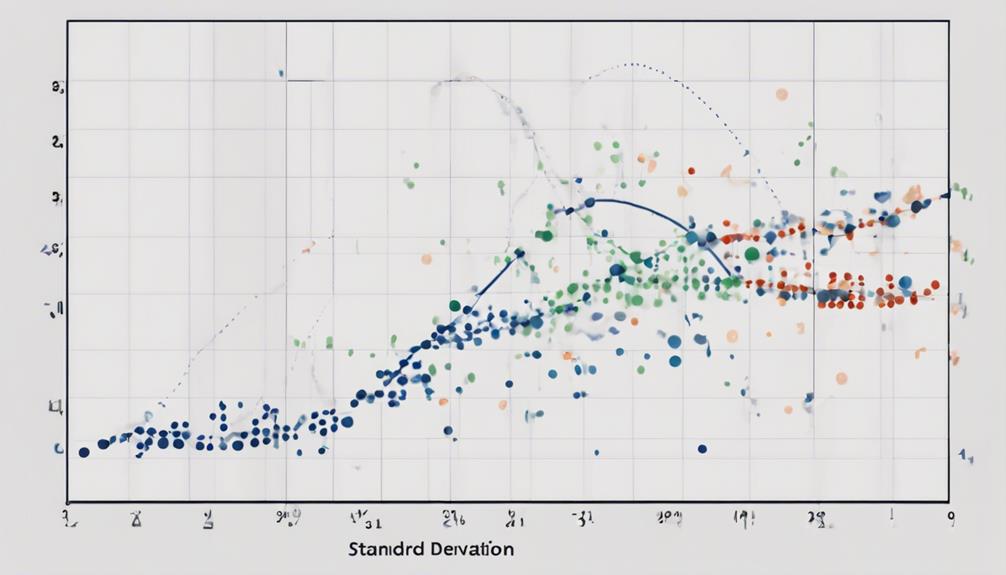
Calculating Standard Deviation for trading involves a meticulous process of determining the deviations of closing prices from the mean, squaring these deviations, summing them up, and dividing by the number of periods. This calculation is crucial as it provides insight into the volatility of prices and aids traders in understanding how much prices deviate from the average, thus helping in risk assessment and predicting potential price movements.
Interpreting the Standard Deviation values accurately is essential for traders to make informed decisions, set realistic price targets, and effectively manage risk in the financial markets.
Importance of SD Calculation
In the realm of trading analysis, the calculation of Standard Deviation serves as a fundamental pillar for evaluating price volatility and deviations from the mean.
- Standard Deviation helps measure price volatility and deviation from the arithmetical mean in trading.
- It aids in identifying trend strengthening and predicting market activity levels.
- Utilizing Standard Deviation alongside other technical indicators enhances analysis and trading strategies.
Interpreting SD Values
Understanding the implications of Standard Deviation values in trading requires a nuanced analysis of price dispersion and market volatility. Standard Deviation (SD) serves as a key Trading Indicator, reflecting the level of volatility in price moves.
Higher SD values indicate increased price volatility and larger swings, signaling potential market tops or bottoms. Conversely, lower SD values suggest less volatility, commonly observed in stable or range-bound markets.
Traders rely on SD values to assess historical price movements and evaluate the risk associated with trading activities. By interpreting SD values accurately, market participants can make informed decisions regarding entry and exit points, risk management strategies, and overall market conditions.
Trading Strategies With Standard Deviation
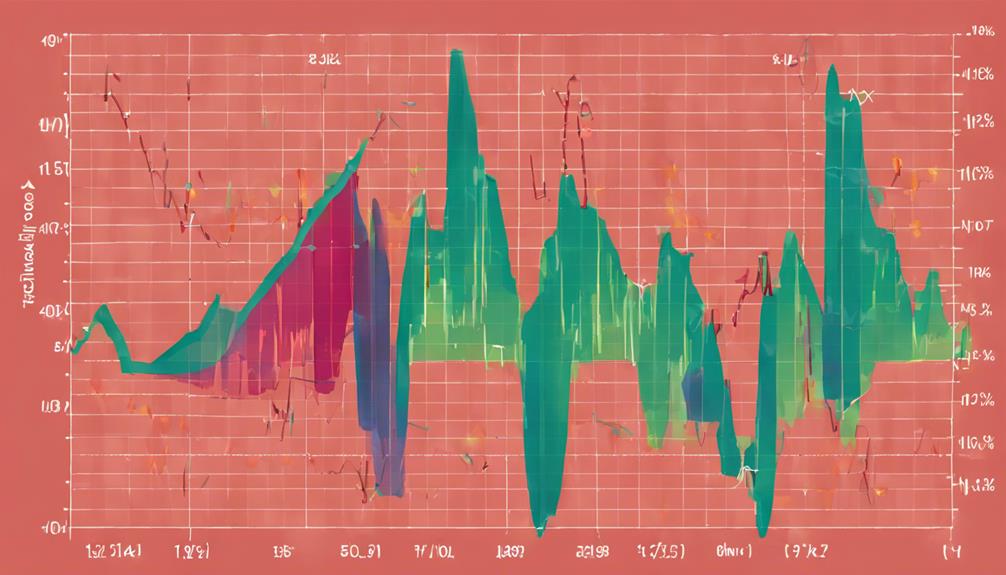
When implementing trading strategies with Standard Deviation, the key focus lies in leveraging its ability to detect potential trend reversals by analyzing deviations from the average price.
To enhance the effectiveness of trading strategies, consider the following:
- Combining Indicators: Incorporate Standard Deviation with indicators like ATR, Fibonacci levels, and oscillators for a more comprehensive analysis.
- Utilizing Standard Deviation Waves: Monitor Standard Deviation waves to recognize early trend reversals, allowing for timely adjustments in trading decisions.
- Leveraging Recommended Indicators: Enhance your strategies by using Standard Deviation in conjunction with popular indicators such as Bollinger Bands and MACD for more refined analysis.
High Vs. Low Standard Deviation Analysis
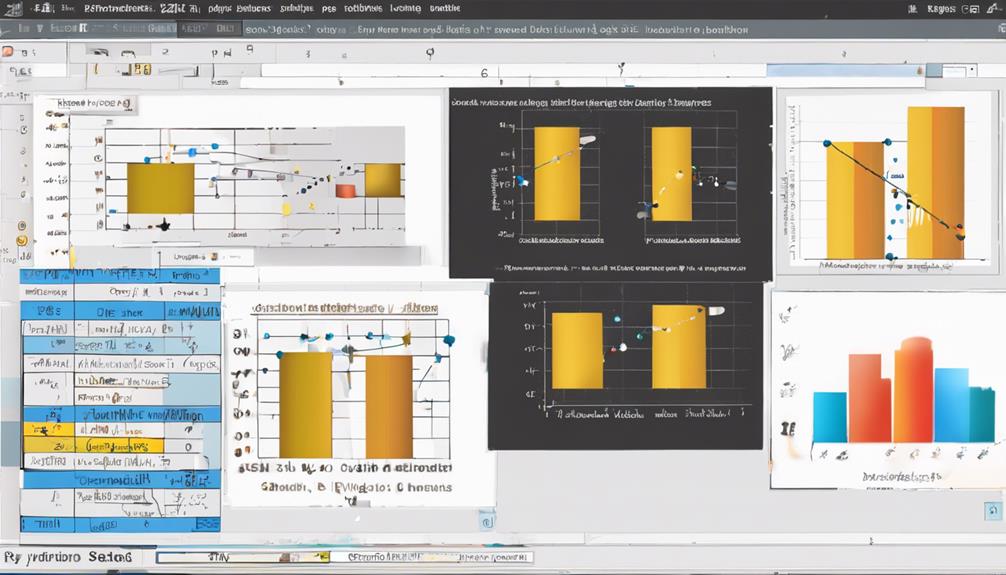
Trading analysis based on Standard Deviation differentiates between high and low values to gauge market volatility and potential price movements. High standard deviation indicates significant price changes compared to recent candles, signaling increased volatility in the market. This can help traders identify potential opportunities for profit in rapidly changing market conditions.
On the other hand, low standard deviation suggests stable prices and a ranging market with minimal price fluctuations. Traders may choose to adjust their trading strategy based on these readings. It's important to note that very low standard deviation readings may precede an imminent increase in volatility and significant price movements.
Therefore, understanding these indicators over time can assist traders in making informed decisions and adapting their strategies accordingly. By keeping an eye on standard deviation levels and interpreting them within the context of market conditions, traders can enhance their overall trading approach and improve their chances of success.
Setting Up Standard Deviation Indicator
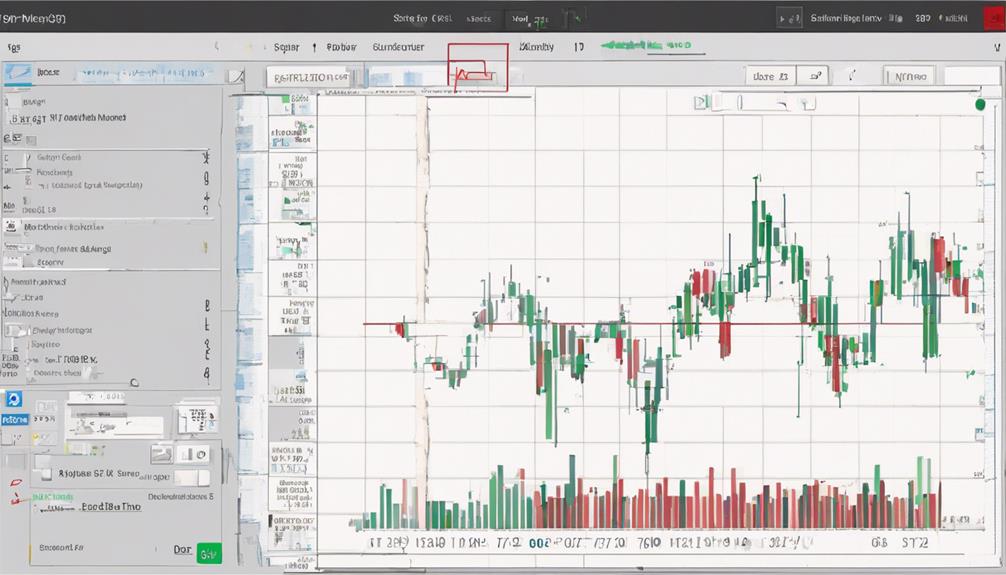
One may customize the sensitivity of the Standard Deviation indicator by adjusting the default setting of 20 to suit their trading preferences and market analysis needs.
When setting up the Standard Deviation indicator, consider the following:
- The indicator measures volatility by calculating the standard deviation of price changes.
- Adjusting the sensitivity of the indicator can help in identifying significant deviations from the mean.
- The indicator looks at recent periods to provide insights into potential market trends and price movements.
Combining ATR With Standard Deviation
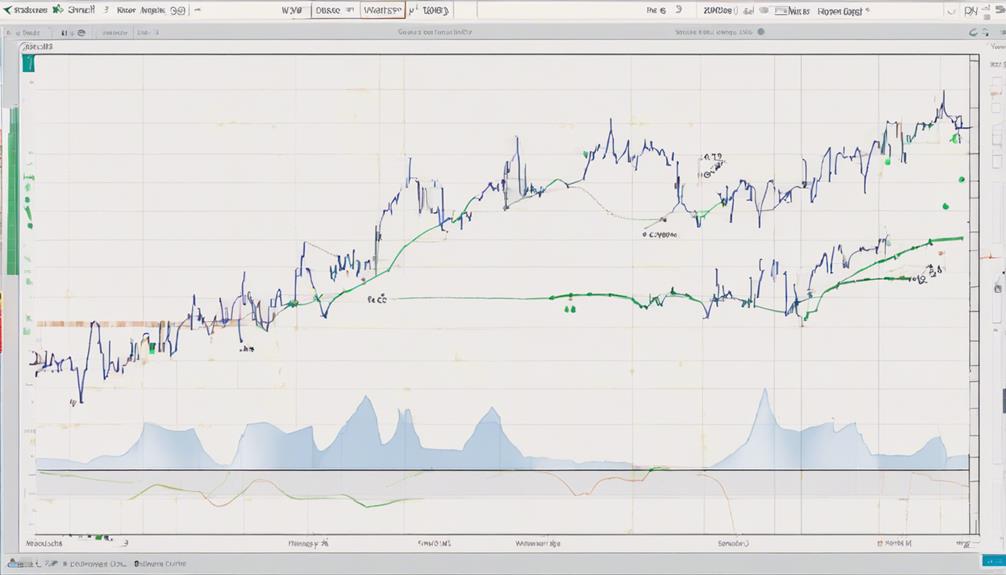
The integration of Average True Range (ATR) with Standard Deviation in market analysis provides a comprehensive evaluation of volatility dynamics and potential price movements. ATR, focusing on the true range of price movement, complements Standard Deviation's assessment of price dispersion, enhancing the understanding of market volatility.
When ATR indicates higher volatility, and Standard Deviation shows a wider price dispersion, it suggests increased market uncertainty and larger price swings. On the other hand, lower Standard Deviation coupled with low ATR values may signal a period of price stability and reduced volatility.
Using Fibonacci Levels With Standard Deviation
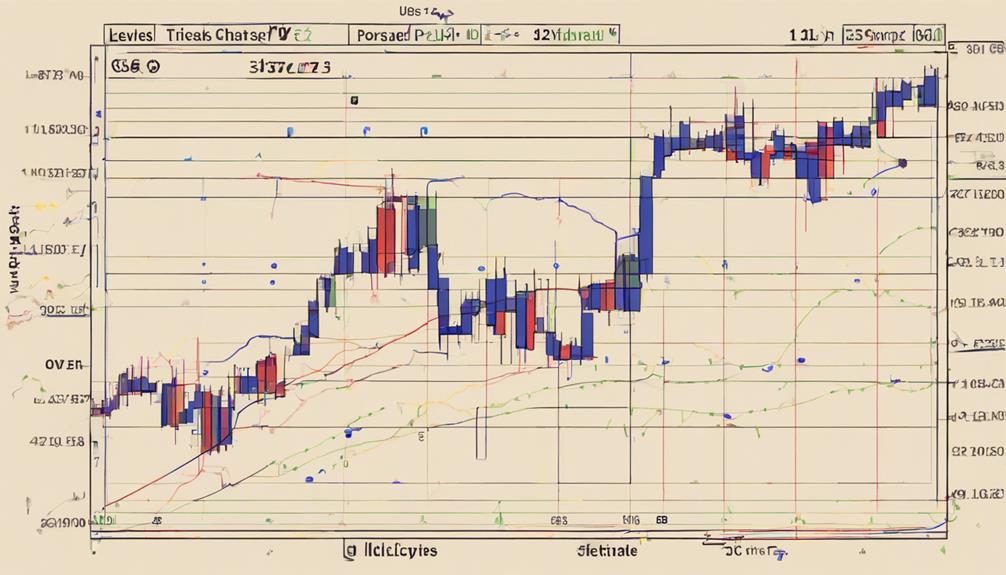
Utilizing Fibonacci levels in conjunction with the standard deviation indicator enhances the analysis of potential support and resistance levels in the market. This combined approach offers a more comprehensive understanding of market dynamics by incorporating both historical price movements and volatility measurements. When using Fibonacci levels with standard deviation for price analysis and trend identification, traders can benefit from a more nuanced perspective on market behavior and potential price action.
- Improved Support and Resistance Identification: The combination of Fibonacci levels and standard deviation helps in pinpointing key levels where price reversals or continuations are likely to occur.
- Enhanced Trend Analysis: By integrating Fibonacci retracement levels with standard deviation, traders can better identify and confirm trends in the market.
- Better Prediction of Price Reversals: Utilizing Fibonacci levels alongside standard deviation aids in predicting potential price reversals based on historical price movements and volatility patterns.
Practical Examples of Standard Deviation
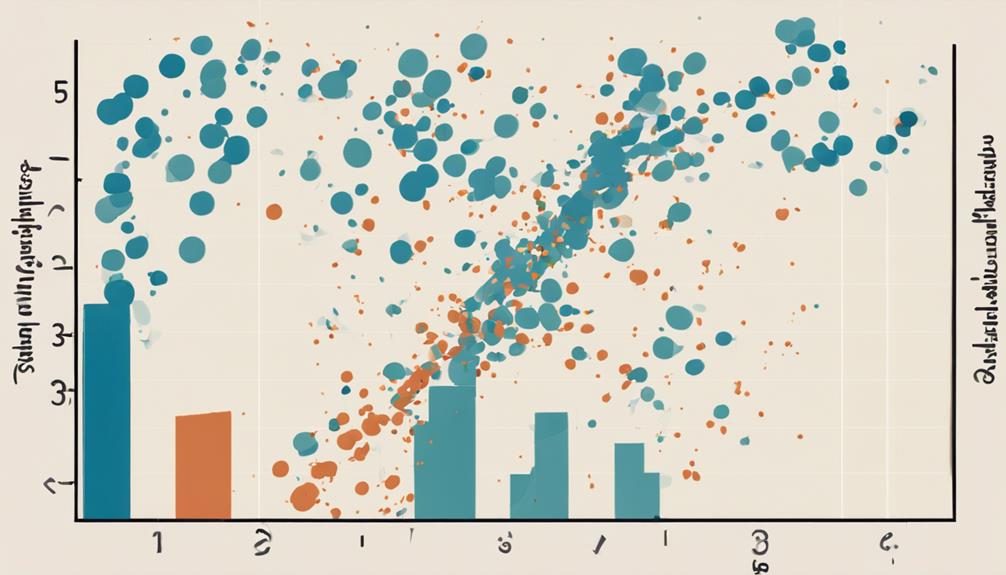
Practical application of standard deviation in financial analysis unveils crucial insights into market volatility and potential price movements. When analyzing a chart, a high standard deviation reading can indicate recent significant price changes, suggesting increased volatility in the market.
This is often depicted by a shaded area on the chart, highlighting periods of substantial price movements associated with high standard deviation readings. Conversely, a low standard deviation reading may signal stable prices and a ranging market, indicating a period of potential consolidation before a significant price move.
However, very low standard deviation levels could forewarn of an imminent increase in volatility, potentially leading to significant price changes. It is essential to consider adjusting the standard deviation settings, such as the default 20, as this can impact the indicator's sensitivity and alter the interpretation of price movements, providing traders with valuable insights for making informed decisions.
Tips for Mastering Standard Deviation
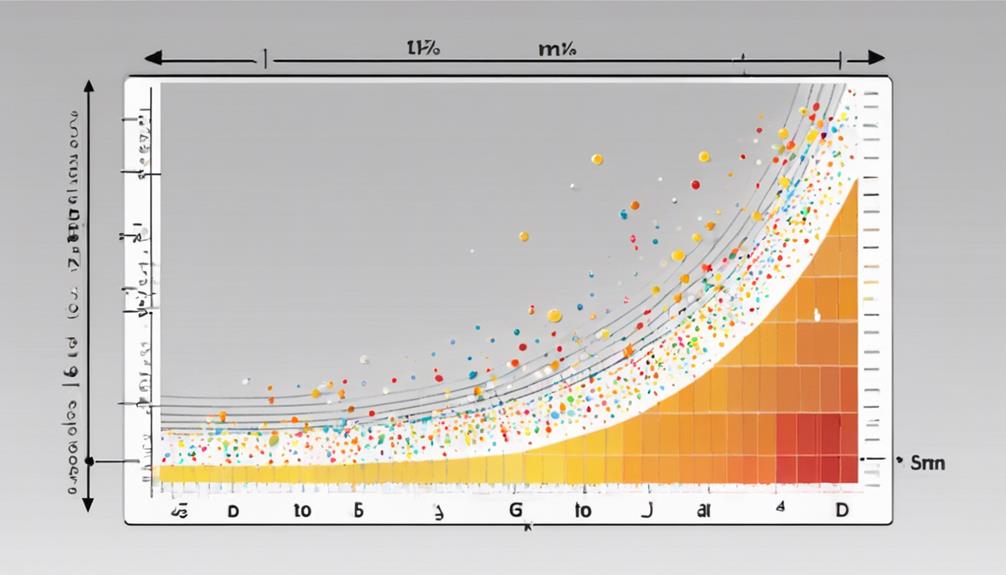
Enhance your proficiency in utilizing the Standard Deviation indicator by implementing strategic techniques and analytical approaches.
- Understand Standard Deviation Measures: Familiarize yourself with how Standard Deviation quantifies price volatility and the extent of deviation from the mean average, providing insights into asset variability.
- Calculate the Standard Deviation: Master the calculation process by determining the mean average, calculating deviations, squaring them, summing the squared deviations, and dividing by the number of periods for accurate results.
- Utilize Standard Deviation for Risk Management: Apply Standard Deviation in risk assessment to gauge market volatility, assess potential risks, and implement effective risk management strategies in trading practices.
How Can I Use Standard Deviation as a Technical Indicator in Different Ways?
When defining standard deviation technical indicator, traders can use it to measure market volatility, identify potential trend reversals, and set stop-loss levels. Additionally, standard deviation can be applied to various trading strategies such as Bollinger Bands, moving averages, and momentum indicators to enhance technical analysis.
Frequently Asked Questions
How Do You Read a Standard Deviation Indicator?
Reading a Standard Deviation Indicator involves analyzing price dispersion from the average on a chart. It helps identify volatility and deviations in price movements. Observing changes in the Standard Deviation line indicates shifts in market volatility, aiding in decision-making.
How Do You Interpret Standard Deviation Results?
Interpreting standard deviation results involves analyzing the level of price dispersion from the average, indicating market volatility. Higher values signify increased price swings, while lower values suggest stability. Understanding this data is essential for risk management and anticipating price movements.
How Do You Know if Standard Deviation Is High or Low?
Standard deviation's high value indicates increased price fluctuations, signaling heightened market volatility. Conversely, a low standard deviation suggests stable prices and minimal deviations, indicating a range-bound market. Understanding these levels assists in gauging potential market movements.
How Do You Interpret Standard Deviation in Investments?
Interpreting standard deviation in investments involves assessing market volatility. High standard deviations indicate increased price dispersion, signaling higher risk and potential profit/loss fluctuations. Understanding this metric aids in risk evaluation and strategic decision-making for investment portfolios.
Conclusion
In conclusion, mastering the Standard Deviation indicator is essential for traders to analyze market volatility, identify potential price movements, and develop effective trading strategies.
By understanding how to calculate and interpret Standard Deviation, traders can make informed decisions and manage risk effectively.
Remember, 'A stitch in time saves nine,' emphasizing the importance of proactive analysis and risk management in trading to achieve long-term success.
